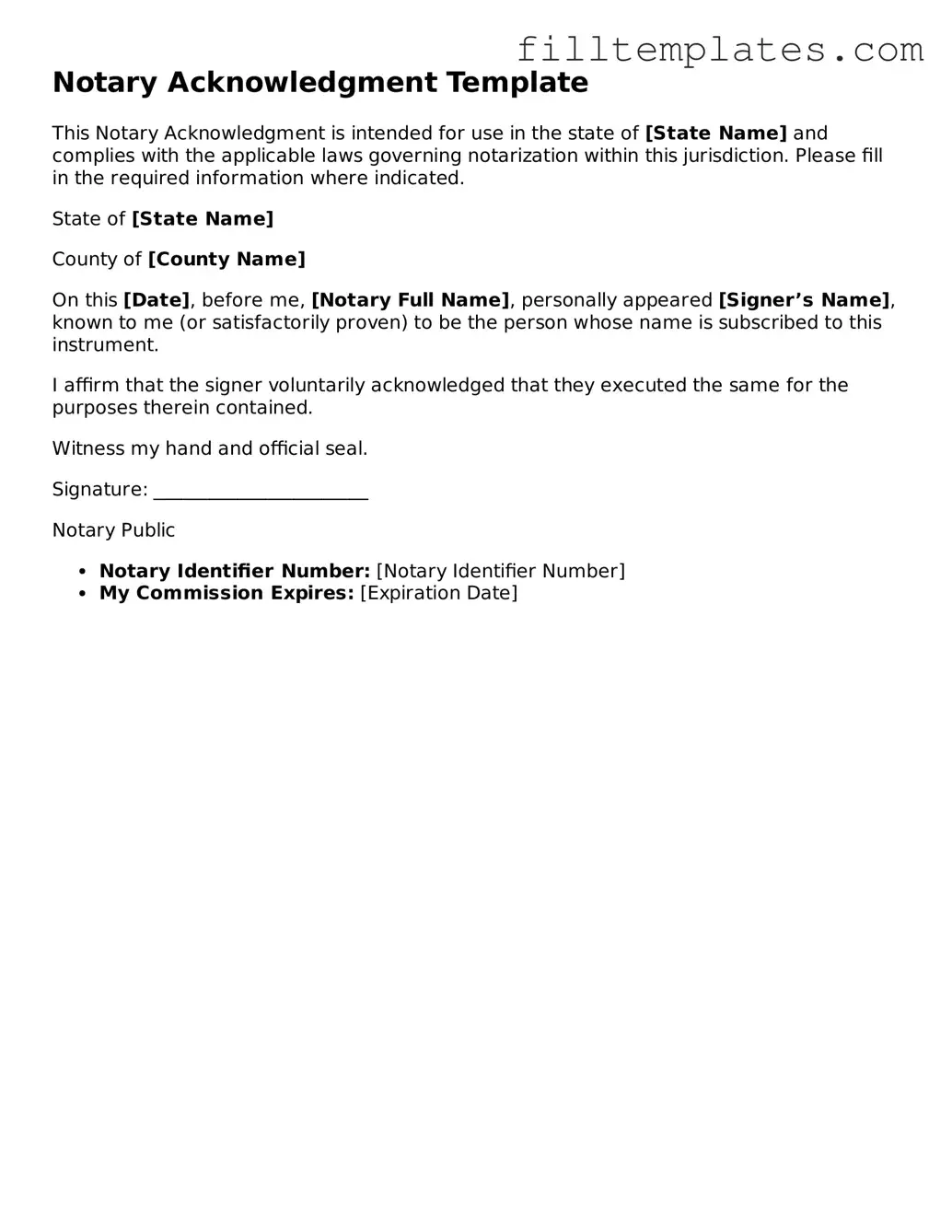Free Notary Acknowledgement Template
The Notary Acknowledgement form is a legal document used to verify the identity of individuals signing a document and to confirm that they did so willingly. This form serves as proof that a notary public has witnessed the signing of the document, adding a layer of authenticity and credibility. Understanding its purpose and requirements is essential for anyone involved in legal transactions.
Open Notary Acknowledgement Editor
